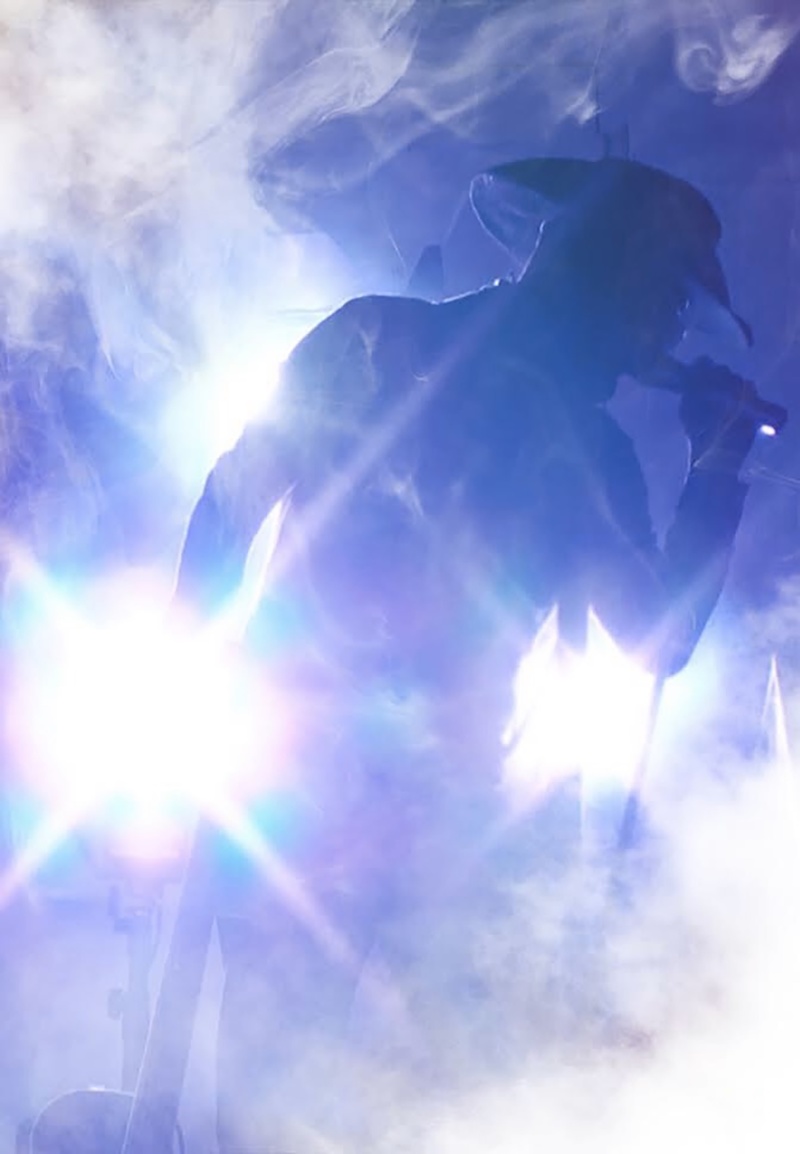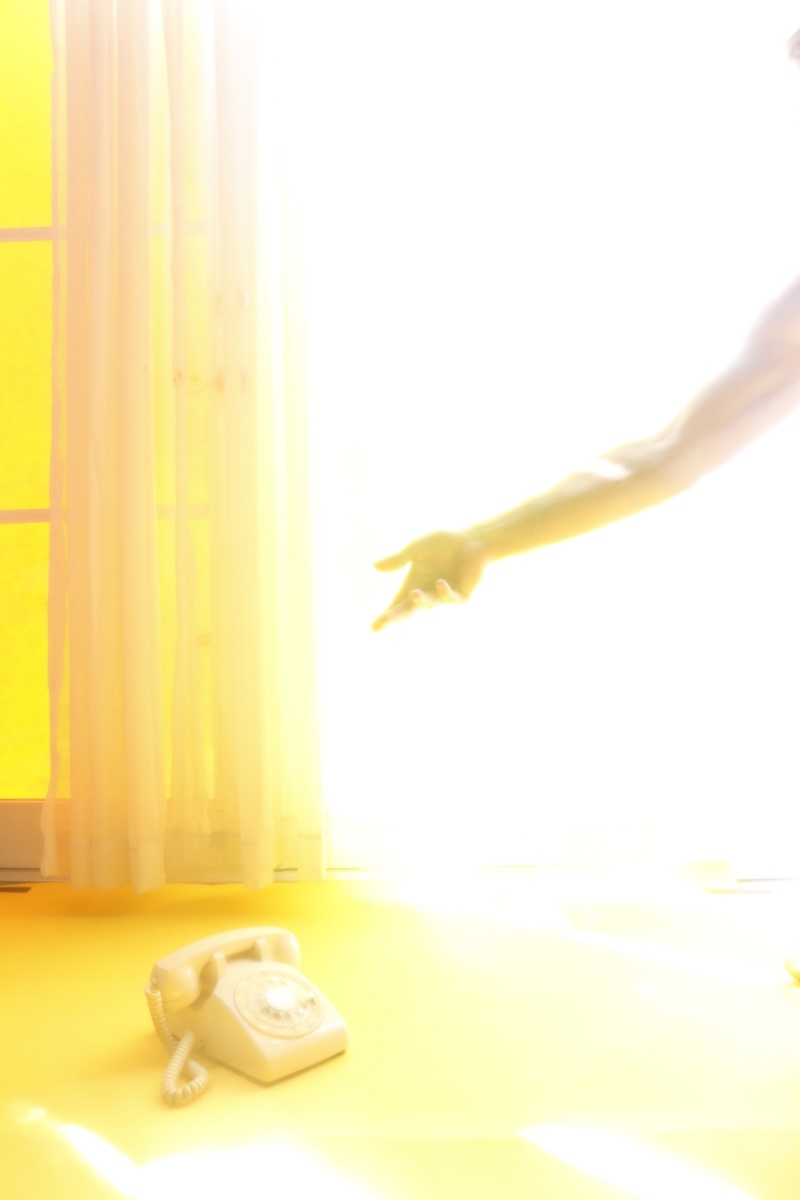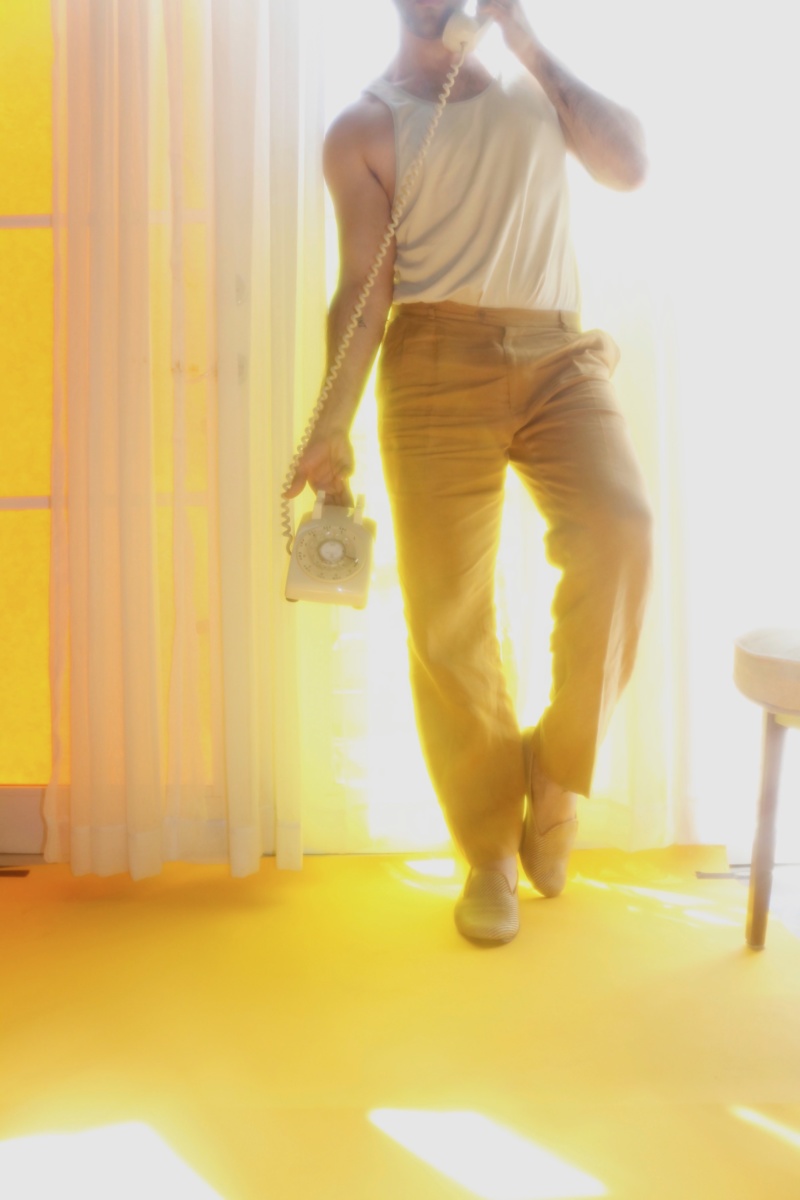
A.G., a Miami-based artist, writer and performer, debuts a new EP in a fully immersive way with lights, cameras and action. Zeitgeist Machine is a five-song EP with lyrics, melody, and arrangements written and performed by A.G., produced by multi-instrumentalist jazz prodigy Dion Kerr and mixing by ANR’s Brian Robertson. Presented by the Bas Fisher Invitational, on March 22 and 23, A.G. invites the public to experience the EP through If you call I’ll be right with you, a production combining music, video and theater. We sat down with A.G. to talk about how the show pulls from pop music and pop culture to create a space for engaging the self and others—a space for connection.
This is your first live show—can you talk about the process of developing it? Did you always plan for it to be a live show or did it evolve from something else? With this show, it is true that this is my first “live show”—as in my first proper one-man show—with total control of everything, from start to finish. In my artistic practice, I’ve been creating performative vignettes of showmanship since I was in performing arts school, but this time I can bill it as a show—ticketed and all! And that was my goal: to commit to the art form of the “show,” something I’ve been practicing in pieces, writing about, researching, even training, reading books on acting, taking ballet classes at night, enduring lessons from an intimidating Eastern European vocal coach who lives on the 6th floor of my apartment building. I’ve been doing this for years, subconsciously waiting until I felt ready, not just to get on stage—that’s easy—but to get on my own stage and say the things that I want to say. Really that was the work, figuring out what it is that I want to say on my stage.
And this show is essentially a pop show. I’ve always wanted to make music because I believe that pop music is the most powerful conduit in culture. However you look at it, its ability to distill, demonstrate and disseminate ideas to the masses is unlike any other art form—and done with a sense of awareness and consideration, it very much is an art form. So utilizing this pop-structure as a template to lean in to and create music with super talented musicians, producers and mixers has been a feeling like I’ve never felt before. I brought in to the studio a lot of references to classic Americana music: Country, Folk, Jazz, and the Great American Songbook. My thought is that these are the entertainment genres historically used in the US during times which are perceived to require “overcoming.”

What is the story behind the title If you call I’ll be right with you? What I wanted to say with this show, which is sort of a prelude to the rest of the work I’m developing, is that I, me, as an individual, am here, not as someone who wants the spotlight, but as someone who wants to stand in the spotlight to show the audience that all it is is an individual, a spotlight, and some ideas worth sharing. In other words, I want to be a teacher, leading by example, that can show how malleable all of this really is—all of reality. Entertainment is a realm in which these lessons can be plastic, interesting and captivating. The stage for me has always been a charged space for potentiality, where many psychological aspects are brought up, though rarely questioned, for those both on and off of the stage. It implies a relationship of dialogue. But you have to be interested in listening: if you call, I will answer.
Why did you choose the abandoned rotunda in Collins Park as the setting for your production? The abandoned rotunda in Collins Park, in Miami Beach, is perfect for this show. It’s truly a black box theater, but not in the institutional sense. It reminds me of the very first Martin Margiela runway presentations, which were total punk DIY shows, and that was part of the excitement. It’s all exposed cinderblock, there’s no seating, there’s no A/C; there’s barely a lock on the door. And it’s completely round and very tall so the acoustics are really bizarre. It’s a bit like a mausoleum. I love the idea of having to bring my own everything—all the lighting, equipment, set, even little touches that will go unnoticed. I had to plan it, procure it, and haul it in myself.
How does the setting play a role? Having a raw, empty space was important to me because of the way that I conceived of and produced the final product of the show. The idea is that I am creating a singular artwork—a pre-packaged pop-show. What that means is that everything in the space is included in the packaged show: the lighting, the audio, the video, the stage, even the costume is an all black outfit which conceals my identity. In front of the lighting and the fog, I am a total silhouette on stage. So even though it is my image on the monitors and my voice in the music, if need be, someone else could actually play the role of A.G.

What drew you to the telephone as a symbol? The telephone is a classic prop, like a car or a window. It’s very cinematic and useful. In this instance, it’s a prop that implies that there is a dialogue; in the show, that dialogue is either between me and someone unknown, between me and the audience, or between the audience and someone unknown. It allows me to be on stage alone, but never really alone, and it allows me to engage with the audience, and vice versa, without actually having to confront anyone. It’s a very considerate yet effective technique to create communication. Also, I won’t have to tell anyone to turn off their phones, because there are ringing sounds throughout.
How do you represent something abstract like the idea of the “Other” as a force whose presence is felt during the production? The ideas of the Other, besides with the theatrical moments of prerecorded telephone dialogue, are mostly in the song lyrics. Pop music has this really good way of implying an Other in the music. There’s always someone that is being talked to or about. I think this is fascinating and totally bizarre—but more importantly it really does affect how we think of others and ourselves. We’re always conjuring these outside figures, but really we are exploiting these ghosts as a means to discuss overcoming, or love, or sex, or abandonment, or empowerment, but always at the cost of this fictional other—as real as they seem to us as we sing along. I’m using this ghost of an Other in the same way, but being aware of the psychological implications.
What prompted you to create a hotline? Can you share what some of the messages left on it have been about? I created a hotline to premiere the title track because I thought it would be an appropriate way to engage with the song and the message. If you call I’ll be right with you—it made sense for me to have people actually call me! The song is totally compressed and low quality, but it sounds like an answering machine, so there’s this charming romanticism about it. I also was thinking about alternative ways to disperse products of the “pop-machine” into everyday lives that didn’t require any monetary exchange. It’s sort of like a help-hotline, but much more poetic—and I suppose much less helpful—but it allows others to listen to music on their phone in a much more engaged manner.
The answering machine function isn’t really disclosed, so almost all of the messages left, which go straight to my email, were candid. The best review I received was a message from two people who had just listened, and one said “I love it!” then questioned her friend, “Don’t you love it?” Her response was “I don’t know, it’s a lot…” That’s all I ever want: to be a lot, but loved for it!

The main themes seem to be the Other and Self—is there a sort of personal exploration you are seeking to provoke within the audience or is it a reflection of your own introspection that you’re sharing with them? I’ve always wanted to make music and I did. And what do you do when you make a record? You hit the streets!
As the first show in my career of many more shows, I’m very aware of this audience playing the role of my first pop-show audience—a vision I sometimes have with my eyes closed. I wanted that relationship to be very much a part of the experience, and a big part of that is the distance created between us through the design of the lighting, fog, and costume. It isn’t a personal narrative or an idea I am pulling from the audience. It’s really more about acknowledging that we are in this together; in order to do that, you have to allude to the boundaries created by the production.
This particular form of stage is relatively new to me, and I look forward to getting comfortable on it surrounded by my friends and family—new and old.










 in your life?
in your life?

